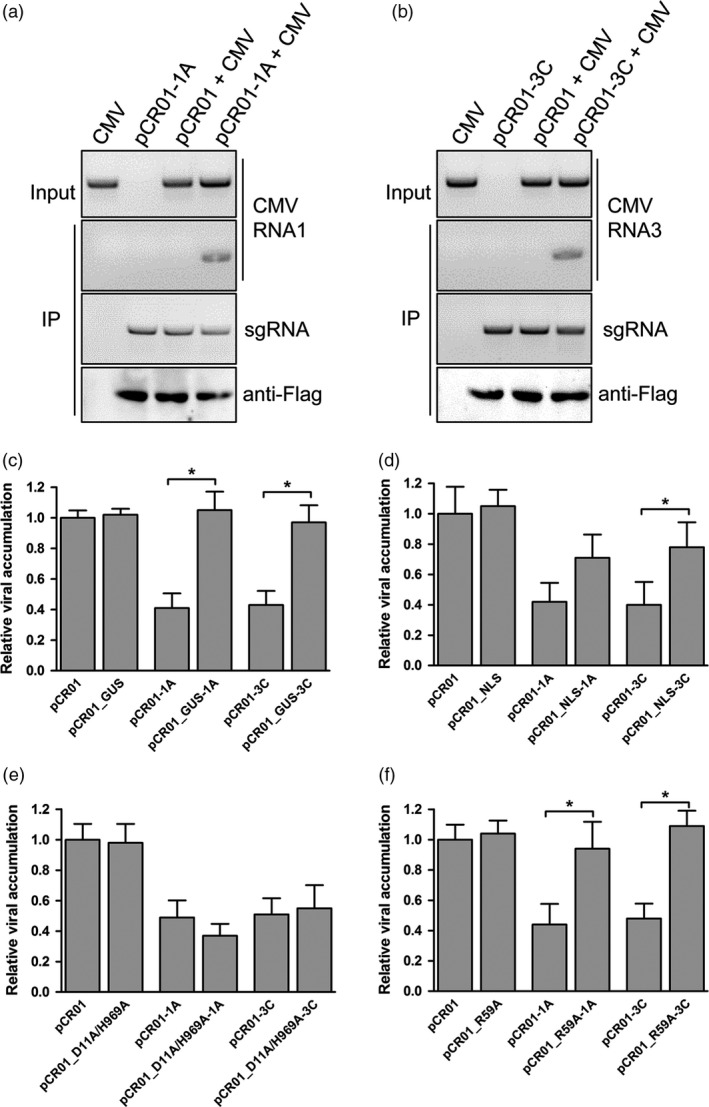Figure 4.

FnCas9 targets CMV RNA by directly binding. (a, b) N. benthamiana plants transiently expressing FnCas9 with sgRNAs targeting the 1A site (a) or 3C site (b) were co‐inoculated with CMV. At five days postinfection, lysates were immunoprecipitated with anti‐FLAG. The coprecipitating RNA was purified and analyzed by RT‐PCR to detect the corresponding viral RNA. A western blot of FnCas9 was performed to confirm the FnCas9 proteins were successfully expressed and immunoprecipitated. The results from one out of two independent experiments are displayed. (c‐f) Several chimeric pCR01vectors with GUS replaced FnCas9 (c), FnCas9 attached to a NLS (d), alanine double point mutations in the RuvC and HNH domain (D11A/H969A) (e), and alanine point mutation in the ARM (R59A) (f) were tested for the virus inhibition efficiency by transiently expressing them with sgRNA targeting 1A or 3C sites in the CMV genome. Virus accumulation was assessed by RT‐qPCR. Error bars represent s.d.; asterisks indicate significance: * P <0.01. Data are representative of three biological replicates.
